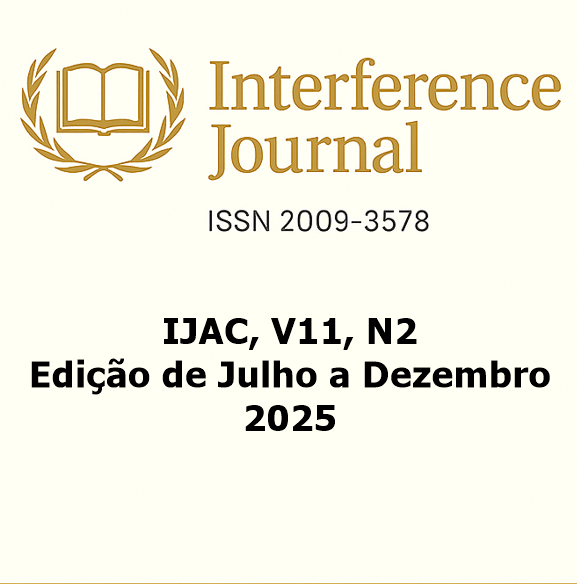Gestação na adolescência em comunidades ribeirinhas do Amazonas: barreiras de acesso ao pré-natal e papel da UBS
DOI:
https://doi.org/10.36557/2009-3578.2025v11n2p3317-3328Keywords:
Adolescent pregnancy, Amazon, Prenatal care, Primary Health Care, Riverside communitiesAbstract
Adolescent pregnancy in riverside communities of the Amazon represents a major public health challenge, shaped by social, economic, and cultural determinants that intensify maternal and neonatal vulnerabilities. In this context, understanding the barriers that hinder access to prenatal care is essential to support equity-oriented policies. This article aimed to analyze the main obstacles faced by adolescent women in riverside areas regarding prenatal adherence and to discuss the strategic role of Primary Health Care Units (UBS) in promoting comprehensive care. It is a narrative literature review, qualitative and exploratory in nature, based on scientific articles, official documents, and epidemiological data published between 2015 and 2024. Findings indicate that geographical distance, lack of transportation, low education levels, social stigma, and weaknesses in the health care network compromise prenatal monitoring. On the other hand, UBS emerge as a strategic entry point to the Unified Health System, with the potential to reduce inequalities through multiprofessional practices, itinerant care, and health education initiatives. It is concluded that strengthening Primary Health Care, combined with intersectoral public policies directed at riverside populations, is crucial to ensure equitable and effective maternal and child health care in the Amazon.
Downloads
References
BRASIL. Ministério da Saúde. Política Nacional de Atenção Básica. Brasília, DF: Ministério da Saúde, 2017. Disponível em: https://abennacional.org.br/wp-content/uploads/2024/06/PNAB_portaria_2436-setembro_2017.pdf. Acesso em: 12 set. 2025.
BRASIL. Ministério da Saúde. Indicadores de saúde da mulher. Brasília, DF: Ministério da Saúde, 2022. Disponível em: https://bvsms.saude.gov.br/bvs/publicacoes/painel_indicadores_sus_saude_mulher_a1n1.pdf. Acesso em: 12 set. 2025.
CARVALHO, F. A.; Souza, R. P. Extensão universitária e saúde ribeirinha: desafios e possibilidades. Revista de Extensão em Saúde Coletiva, 2022. Disponível em: https://www.scielo.br/j/edreal/a/qX3KBJghtJpHQrDZzG4b8XB/?format=html&lang=pt. Acesso em: 12 set. 2025.
CHIQUETTO, J. B.; Nolasco, M. A. Comportamento reprodutivo em mulheres ribeirinhas: inquérito de saúde no Médio Solimões. Revista Brasileira de Saúde Materno Infantil, Recife, v. 24, n. 3, p. 455-468, 2024. Disponível em:https://www.scielo.br/j/sdeb/a/mwMkWh6GnCjwCMhLsgrVRDb/?format=html&lang=pt. Acesso em: 12 set. 2025.
COSTA, J. R. et al. Childbirth dynamics in the riverside region of the Brazilian Amazon. Revista Pan-Amazônica de Saúde, Belém, v. 14, e20230045, 2023. Disponível:https://www.scielo.br/j/reben/a/wmVmMcQfsSxHZp6B6CDn8Wv/?format=html&lang=en. Acesso em: 13 set. 2025.
GARCÍA, P. L.; Hernández, C. R.; Toro, V. M. Determinants of access to sexual and reproductive health for adolescent girls in vulnerable situations in Latin America. International Journal of Environmental Research and Public Health, v. 22, n. 4, p. 331-345, 2025. Disponível em: https://doi.org/10.3390/ijerph22020248. Acesso em: 13 set. 2025.
IBGE. Estatísticas de fecundidade e natalidade no Brasil. Rio de Janeiro: IBGE, 2021.
RODRIGUES, M. A.; Lima, F. P.; Carvalho, J. S. Social determinants of health among pregnant women living in riverside communities who received routine prenatal care. BMC Pregnancy and Childbirth, v. 25, n. 1, p. 112-125, 2025. Disponível em: https://doi.org/10.1590/ce.v30i0.96995en. Acesso em: 13 set. 2025.
MENDES, I. S. et al. Childbirth dynamics in the riverside region of the Brazilian Amazon: spatial-temporal pattern of births and flow of parturients served in a regional maternity hospital. Revista Brasileira de Enfermagem, v. 77, 2024. DOI: 10.1590/0034-7167-2024-0038pt. Disponível em: https://www.scielo.br/j/reben/a/wmVmMcQfsSxHZp6B6CDn8Wv/?lang=pt. Acesso em: 17 set. 2025.
SILVA, R. S. et al. Health literacy and quality of life of riverine populations in primary health care. PLOS Global Public Health, v. 2, n. 8, e0000783, 2021. Disponível em: DOI: 10.1590/1518-8345.7402.4440. Acesso em: 13 set. 2025. Disponível em: https://doi.org/10.1590/1518-8345.7402.4440. Acesso em: 13 set. 2025.
OLIVEIRA, A. P. et al. Gravidez na adolescência no Brasil: determinantes sociais e impactos. Revista Brasileira de Saúde Materno Infantil, Recife, 2020. Disponível em: DOI:10.36557/2674-8169.2024v6n7p778-791. Acesso em: 14 set. 2025.
OLIVEIRA, T. C. Qualidade da assistência pré-natal oferecida às gestantes ribeirinhas na calha do rio Amazonas. 2024. Dissertação (Mestrado em Saúde Coletiva) – Universidade de São Paulo, São Paulo, 2024. Disponível em:DOI: 10.11606/D.22.2024.tde-23102024-074934. Acesso em: 14 set. 2025.
WHO. World Health Organization. Recommendations on antenatal care for a positive pregnancy experience. Geneva: WHO, 2016. Disponível em: https://www.who.int/publications/i/item/9789241549912. Acesso em: 13 set. 2025.
Downloads
Published
How to Cite
Issue
Section
License
Copyright (c) 2025 Fernanda de Magalhães Chacon, Yasmim Cristina dos Santos Pereira , nalda das Neves Nogueira Brandão, Vitória Larissa da Silva Galvão, Dimas Melo Gonçalves

This work is licensed under a Creative Commons Attribution 4.0 International License.
Você tem o direito de:
- Compartilhar — copiar e redistribuir o material em qualquer suporte ou formato para qualquer fim, mesmo que comercial.
- Adaptar — remixar, transformar, e criar a partir do material para qualquer fim, mesmo que comercial.
De acordo com os termos seguintes:
- Atribuição — Você deve dar o crédito apropriado , prover um link para a licença e indicar se mudanças foram feitas . Você deve fazê-lo em qualquer circunstância razoável, mas de nenhuma maneira que sugira que o licenciante apoia você ou o seu uso.
- Sem restrições adicionais — Você não pode aplicar termos jurídicos ou medidas de caráter tecnológico que restrinjam legalmente outros de fazerem algo que a licença permita.


